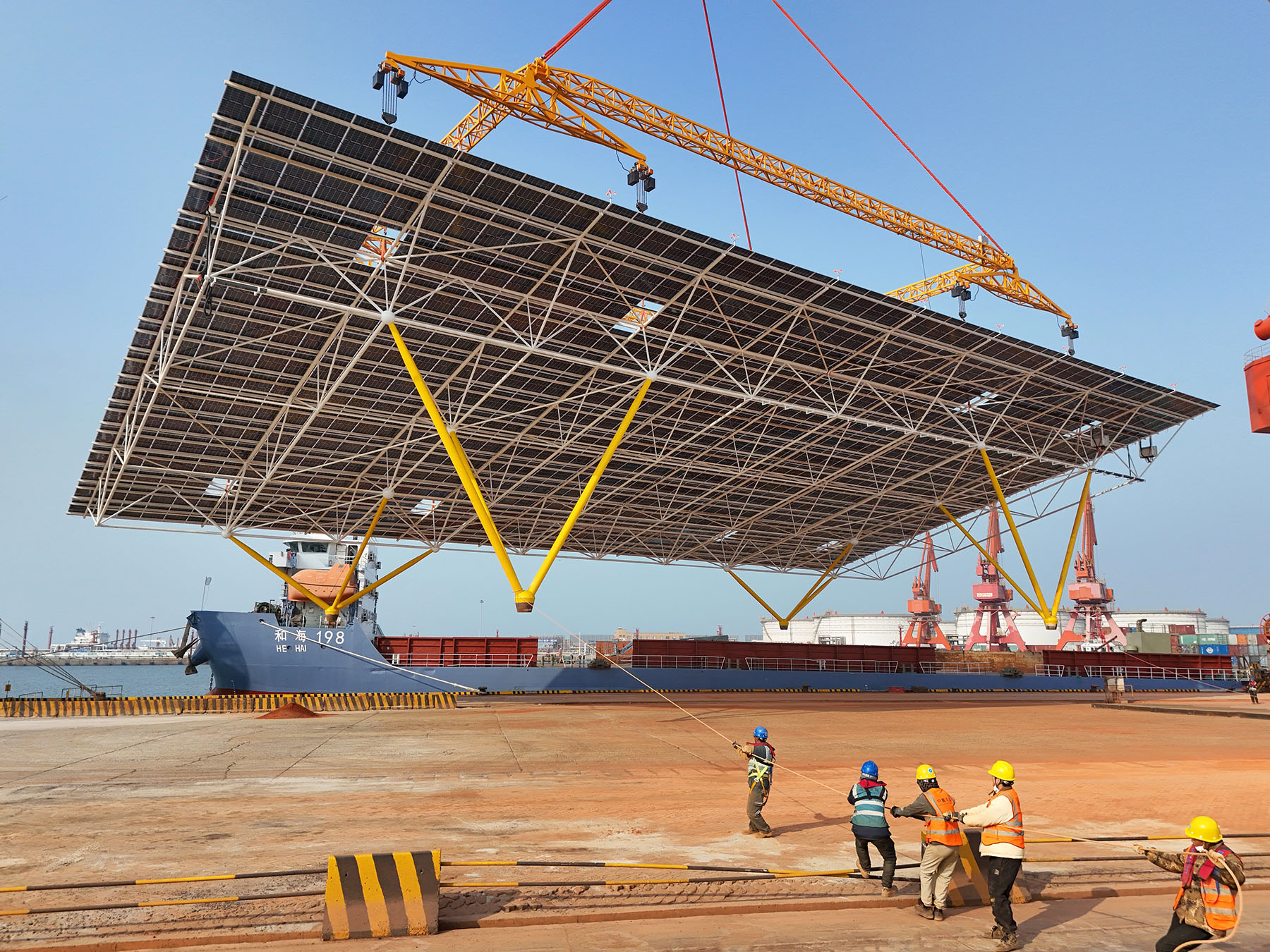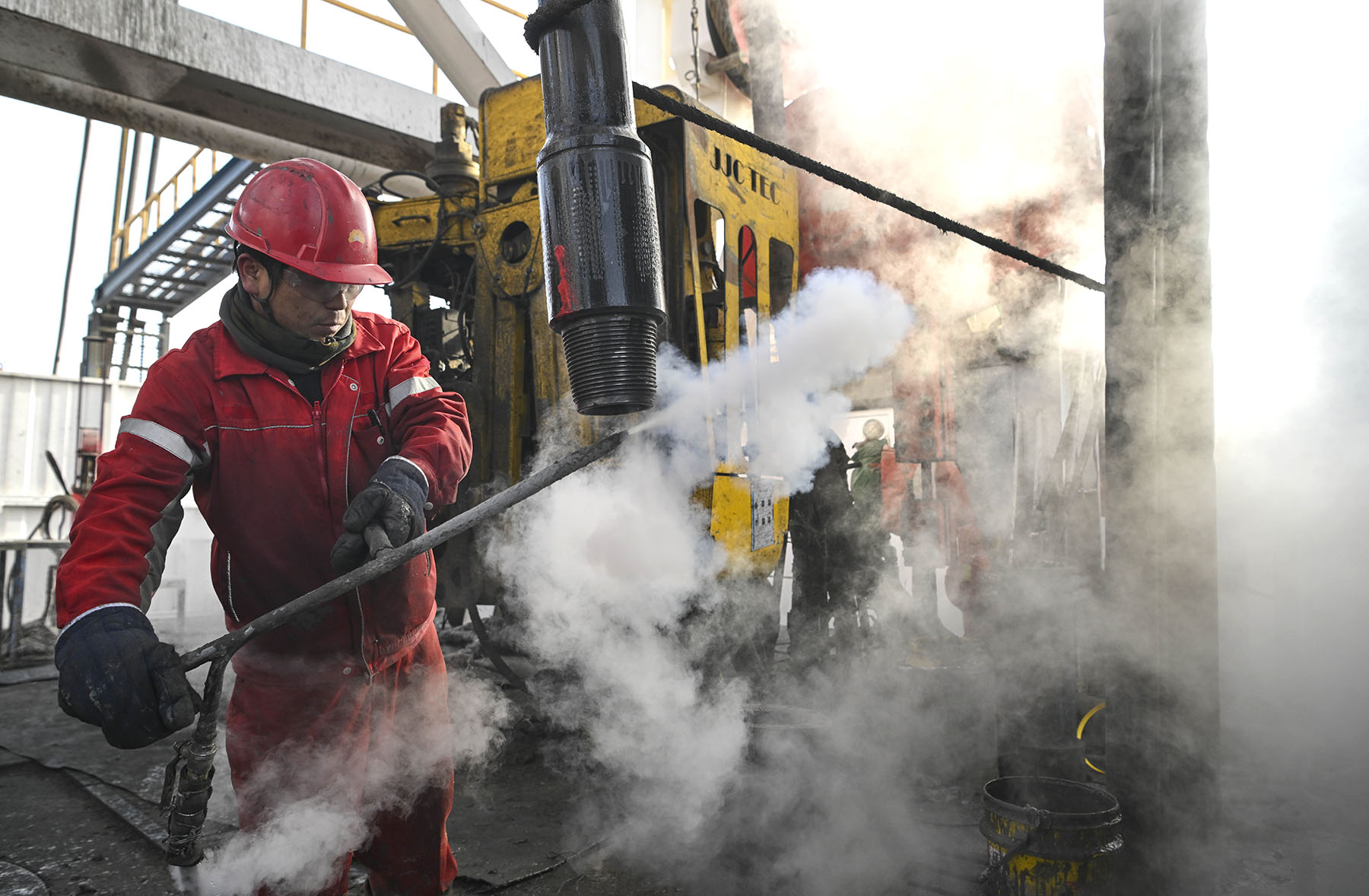
Advancements in exploration, production technology have also boosted output of oil and natural gas, ensuring stronger resource resilience in world's second-largest economy
Even as it navigates global uncertainties and supply chain disruptions, China has made significant strides in enhancing its domestic energy security, with the energy self-sufficiency rate rising to above 80 percent.
This improvement in recent years is part of a larger trend of steady growth in domestic energy supply, driven by the increased production of oil and natural gas, according to a report released by China National Petroleum Corp Economics and Technology Research Institute in Beijing in January.
READ MORE: Energy self-sufficiency rate reaches 85%
The country's total oil and gas output surpassed 400 million metric tons of oil equivalent last year, while total power generation exceeded 10 trillion kilowatt-hours, marking a 5.7 percent increase over the previous year, it said.
Industry experts believe domestic oil and gas output has been playing a central role in the country's energy self-sufficiency, while advancements in exploration and production technology have also boosted output, ensuring stronger energy resilience in the world's second-largest economy.
This growth reflects continued investments in exploration and development across both traditional and unconventional energy sources, as Chinese oil and gas companies are intensifying exploration and development efforts to boost reserves and enhance efficiency, said Lu Ruquan, head of the China National Petroleum Corp Economics and Technology Research Institute.
Exploration and development investments by the three major oil and gas companies — China National Petroleum Corp, China National Offshore Oil Corp and China Petroleum and Chemical Corp — are expected to reach 390 billion yuan ($53.7 billion), which is leading to significant discoveries across a range of oil and gas fields, he said.
This, in turn, helped reduce China's dependence on crude oil imports to 71.9 percent in 2024, as the nation's oil and gas industry demonstrated remarkable resilience last year, leveraging advanced technologies to increase domestic production while reducing reliance on imports.
China's reliance on oil imports is projected to remain at around 70 percent between 2026 and 2030, while the world's second-largest refining industry is estimated to import 559 million tons of crude oil this year, a level equivalent to about 11.18 million barrels per day.
These numbers not only demonstrate China's strengthened energy security, but also underscore its growing role in global energy markets, where its demand is continuing to shape trends worldwide, said Lu.

According to the CNPC report, the country's energy consumption in 2024 grew by 4 percent compared to 2023, driving global demand for primary energy up by 1.9 percent.
New proven reserves included approximately 1.5 billion tons of oil and 1.6 trillion cubic meters of natural gas. Oil production reached 213 million tons, growing by 1.9 percent from 2023, marking the sixth consecutive year of increased production.
Natural gas production saw a 5.7 percent year-on-year increase to reach 248.8 billion cubic meters, continuing an eight-year streak of production growth exceeding 10 billion cubic meters annually, said the institute.
Hu Jianwu, deputy director-general of the National Energy Administration's oil and gas department, said China had been accelerating efforts to ramp up oil and gas exploration and development efforts throughout last year, driven by technological innovation and a focus on low-carbon transformation.
As China's oil and gas majors had also been increasing exploration and development efforts throughout last year, focusing on increasing reserves and improving extraction efficiency, 2024 also saw a series of breakthroughs in deep water and unconventional oil and gas exploration, with major new discoveries made in Bohai Bay, Ordos Basin and Tarim Basin, said the administration.
Chinese oil and gas companies are intensifying exploration and development efforts to boost reserves and enhance efficiency, including a concerted effort to tap into unconventional gas resources like coal bed methane, and implement technologies that reduce emissions from fossil fuel operations.
CBM is a new type of unconventional natural resource and is widely distributed across coal-rich basins in China, such as those in Ordos in Inner Mongolia autonomous region, Junggar Basin in Xinjiang Uygur autonomous region and Sichuan province, with estimated reserves exceeding 40 trillion cubic meters.
However, due to unclear reservoir formation mechanisms and high extraction difficulty — together with other challenges including low extraction efficiency, insufficient infrastructure and limited market access — further exploration and development possibilities have been long hindered.
Zhang Qingsheng, executive director of Sinopec Zhongyuan Oilfield under China Petroleum and Chemical Corp, also known as Sinopec, emphasized the strategic importance of developing CBM resources in China.
Zhang highlighted CBM's potential to strengthen energy security and promote cleaner energy use, and underscored the wider industry's role in decarbonization.
"CBM is a valuable resource that can help optimize our energy structure while reducing greenhouse gas emissions. We should take proactive measures to accelerate its development," he said, advocating for stronger policy support, increased investment and technological innovation to boost CBM extraction and utilization.
Breakthroughs in ultra-deep drilling and offshore exploration, for example, led by China National Petroleum Corp, have significantly enhanced the country's capacity to tap into its abundant but challenging reserves, securing a more robust foundation for energy independence, said Wu Mouyuan, vice-president of the CNPC institute.
Wu said the country's oil and gas exploration continues to benefit from cutting-edge technologies, including digitalization and artificial intelligence, which have optimized operations and boosted productivity.

Wu believes China is expected to maintain its aggressive investment in oil and gas exploration, with new proven reserves projected to exceed 1 billion tons of oil and 1 trillion cubic meters of natural gas.
Ye Lin, vice-president of commodity markets research at global consultancy Rystad Energy, said China's demand for major transportation fuels showed minimal growth in 2024, as the rapid shift toward electric vehicles reduced gasoline consumption.
The fall in crude oil imports last year was mostly due to weaker domestic gasoline and diesel demand as China imports crude oil mainly to process into transport fuels and chemical feed-stocks, she said.
As electric cars' improved performance and longer mileage are finally winning wide acceptance from customers, gasoline demand started to fall in 2024, she added.
At the same time, China's energy sector is undergoing a major transformation, as the country moves toward a greener, more sustainable energy model.
In 2024, renewable energy generation reached 3.2 trillion kWh, a 14.8 percent increase from the previous year. Renewables now dominate the power generation capacity, accounting for more than 43 percent of the global total, according to the NEA.
China has significantly advanced its energy sector decarbonization through major financial commitments to renewable technologies like wind, solar and hydrogen. These substantial investments in non-fossil energy now represent a third of such spending globally, establishing the country as a central figure in the worldwide shift toward green energy.
This energy transition has also been significantly fueled by the country's swift embrace of electric vehicles. Notably, in 2024, new energy passenger cars achieved a penetration rate exceeding 50 percent, surpassing gasoline-powered vehicles to become the leading category in the market.
China saw a substantial 31.4 million NEVs in use by the end of 2024, representing an ownership rate of 8.9 percent. This upward trend is forecast to persist into 2025, with projections indicating the number of NEVs on roads will surpass 40 million.
According to Lu, while China is advancing in its green transition, fossil fuels will continue to play a critical role in ensuring energy security in the near term.
ALSO READ: Great strides in energy landscape
The country's fossil energy output is expected to grow steadily in 2025, with oil consumption approaching its peak, he said.
In the future, as China shifts toward a more balanced energy structure, coal, oil and natural gas will continue to play an essential role alongside non-fossil fuels, said Lu.
According to the institute, by 2025, China's total energy production is expected to reach approximately 5.26 billion tons of standard coal equivalent, with a slight increase in energy self-sufficiency to 84.7 percent, a 0.1 percentage point improvement from 2024.
At the same time, China's oil and gas companies will continue to invest heavily in exploration and development. In 2025, the country's oil production is expected to remain steady at around 200 million tons, while natural gas output is expected to continue growing by more than 10 billion cubic meters annually.
Technological innovation will be crucial to driving efficiency gains, with digital tools and automation playing a key role in boosting production and managing resources, it said.


